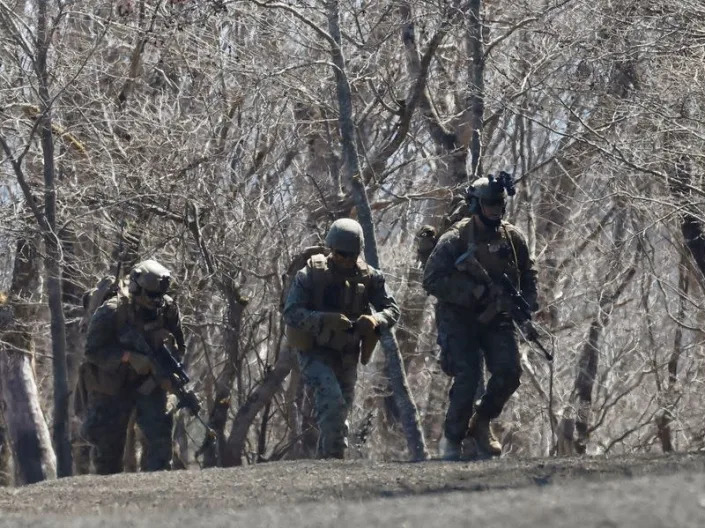Reuters
Japanese, U.S. marines practice airborne assaults in sign of deepening cooperation





Mt.Fuji is seen while a member of the Japanese Self-Defense Force’s Amphibious Rapid Deployment Brigade takes a position during joint airborne landing exercises with U.S. marines in Gotemba
TOKYO (Reuters) – In a sign of deepening military cooperation between Japan and the United States, amphibious Japanese troops and U.S. Marines on Tuesday practised airborne landing assaults together for the first time.
Japan is revising a decade-old national security strategy this year in the face of China’s growing military assertiveness. The upgrade to defence policy guidelines is expected to call for the country to take a more active role alongside Washington in regional security.
The drills in the foothills of Mount Fuji on Tuesday involved 400 troops from Japan’s Amphibious Rapid Deployment Brigade (ARDB), and 600 U.S. marines, and is part of a three-week joint exercise to hone interoperability between the allies. Tilt-rotor Osprey troop carriers were used during the drills.
“The real significance from this training is that the Marines and the ARDB are doing serious combat training of a sort that would have been unthinkable a decade ago,” said Grant Newsham, a retired U.S. Marine Corps colonel who advised Japan as a liaison officer when it set up its amphibious force.
“It demonstrates a more solidly linked U.S. and Japan.”
Activated in 2018, the ARDB troops are Japan’s first marines since World War Two and were formed to reinforce its defence along its southwest islands at the edge of the East China Sea.
Trained to take back captured islands using helicopters, Ospreys and amphibious landing craft, the force of around 1,500 soldiers would likely be one of the first in action to counter any Chinese attack on Japan’s islands.
China, which is locked in a territorial dispute with Japan over uninhabited islands controlled by Tokyo in the East China Sea, routinely dispatches ships to assert its claims.
The joint drills also come as Russia’s invasion of Ukraine raises fresh security concerns in East Asia where China is putting pressure on Taiwan following its crackdown on Hong Kong. Japan also faces Russia’s forces operating from Far East bases that are increasingly cooperating with China’s military.
Moscow describes its military action in Ukraine as a “special operation”.
(Reporting by Tim Kelly; Editing by Karishma Singh)
